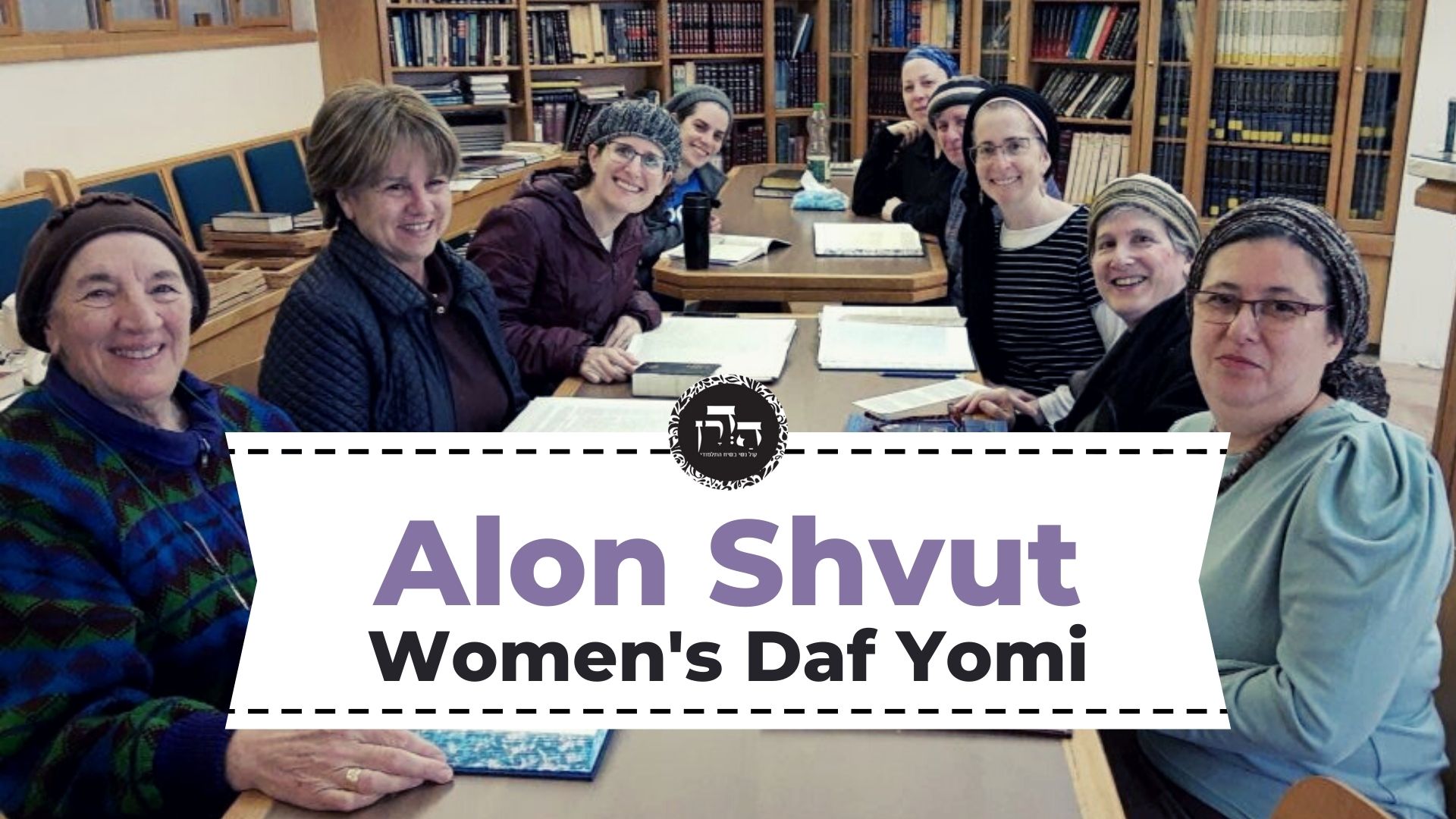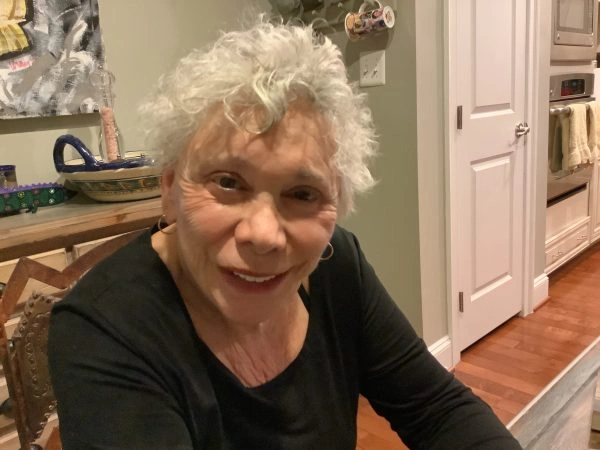Eruvin 85
בּוֹר שֶׁבֵּין שְׁתֵּי חֲצֵירוֹת, מוּפְלֶגֶת מִכּוֹתֶל זֶה אַרְבָּעָה וּמִכּוֹתֶל זֶה אַרְבָּעָה — זֶה מוֹצִיא זִיז כׇּל שֶׁהוּא וּמְמַלֵּא, וְזֶה מוֹצִיא זִיז כׇּל שֶׁהוּא וּמְמַלֵּא. וְרַב יְהוּדָה דִּידֵיהּ אָמַר: אֲפִילּוּ קַנְיָא.
If a cistern in a small alleyway between two courtyards is separated by four handbreadths from the wall of one courtyard and by four handbreadths from the wall of another courtyard, the resident of this courtyard may extend a ledge of minimal size from his window in the direction of the cistern, as a sign that he is not using the domain of the other, and he may subsequently proceed to draw water from the cistern through the window. And the resident of the other courtyard may likewise extend a ledge of minimal size and draw water from the cistern through his window. And Rav Yehuda himself said: An actual ledge is unnecessary, as it is enough even if one merely extends a simple reed.
אֲמַר לֵיהּ אַבָּיֵי לְרַב יוֹסֵף: הָא דְּרַב יְהוּדָה דִּשְׁמוּאֵל הִיא, דְּאִי דְּרַב, הָא אָמַר: אֵין אָדָם אוֹסֵר עַל חֲבֵירוֹ דֶּרֶךְ אֲוִיר.
Abaye said to Rav Yosef: This ruling of Rav Yehuda, that some minimal sort of adjustment is required, is in accordance with the opinion of his teacher, Shmuel. Since if he holds in accordance with the opinion of his other teacher, Rav, this would present a difficulty, as didn’t Rav say: One person does not render it prohibited for another person to perform an action by way of the air, if the place he is using is four handbreadths away from him? Consequently, not even a reed is required.
וְדִשְׁמוּאֵל מֵהֵיכָא? אִילֵּימָא מֵהָא דְּאָמַר רַב נַחְמָן אָמַר שְׁמוּאֵל: גַּג הַסָּמוּךְ לִרְשׁוּת הָרַבִּים — צָרִיךְ סוּלָּם קָבוּעַ לְהַתִּירוֹ. דִּילְמָא כִּדְרַב פָּפָּא!
The Gemara asks: And from where is it ascertained that this is the opinion of Shmuel? If you say we learn it from that teaching which Rav Naḥman said that Shmuel said: With regard to a low roof adjacent to a public domain, there must be a fixed ladder from the courtyard to the roof in order to permit the use of the roof to the residents of the courtyard, it might be inferred from here that the people in the public domain render it prohibited to use the roof because they can use it through the air, by throwing. However, this proof is inconclusive. Perhaps, this halakha can be understood in accordance with the opinion of Rav Pappa: Here we are dealing with a roof upon which people in the public domain place their hats and shawls when in need of rest. That would mean that this halakha does not involve use of the airspace at all.
אֶלָּא מֵהָא: זֶה מוֹצִיא זִיז כׇּל שֶׁהוּא וּמְמַלֵּא, וְזֶה מוֹצִיא זִיז כׇּל שֶׁהוּא וּמְמַלֵּא. טַעְמָא דְּאַפֵּיק, הָא לָא אַפֵּיק — אָמְרִינַן: אָדָם אוֹסֵר עַל חֲבֵירוֹ דֶּרֶךְ אֲוִיר.
Rather, Shmuel’s opinion is learned from this statement: This one, the resident of one courtyard, may extend a ledge of minimal size and draw water from the cistern through his window; and the resident of the other courtyard may also extend a ledge of minimal size and draw water through his window. The reason for this halakha is that one extended a ledge, but if he did not extend a ledge, we say that one person renders it prohibited for another person by way of the air. One resident would be prohibited to draw water from the cistern due to the other resident, who has equal access to the water in the cistern by way of the air.
וּדְרַב מֵהֵיכָא? אִילֵּימָא מֵהָא: שְׁתֵּי גְזוּזְטְרָאוֹת זוֹ לְמַעְלָה מִזּוֹ, עָשׂוּ מְחִיצָה לָעֶלְיוֹנָה וְלֹא עָשׂוּ מְחִיצָה לַתַּחְתּוֹנָה — שְׁתֵּיהֶן אֲסוּרוֹת עַד שֶׁיַּעַרְבוּ.
The Gemara asks: And from where is the opinion of Rav learned, that one person does not render it prohibited for another by way of the air? If you say it is derived from that which was taught in a mishna: If two balconies extend over a body of water, one above the other, and the residents erected a partition for the upper balcony but they did not erect a partition for the lower one, residents of both balconies are prohibited to draw water, unless they established an eiruv together.
וְאָמַר רַב הוּנָא אָמַר רַב: לֹא שָׁנוּ אֶלָּא בִּסְמוּכָה, אֲבָל בְּמוּפְלֶגֶת אַרְבָּעָה — עֶלְיוֹנָה מוּתֶּרֶת וְתַחְתּוֹנָה אֲסוּרָה.
The Gemara continues. And Rav Huna said that Rav said: They taught that the residents of one balcony render it prohibited for the residents of the other balcony to draw water only when one balcony is near the other, i.e., horizontally within four handbreadths. But if each balcony is four handbreadths removed from the other, so that each can use the other only by means of the air, the upper balcony is permitted to draw water, while the lower one is prohibited to do so. This teaching indicates that one person does not render it prohibited for use by another by way of the air.
דִּלְמָא שָׁאנֵי הָכָא, דְּכֵיוָן דְּלָזֶה בִּזְרִיקָה וְשִׁלְשׁוּל, וְלָזֶה בְּשִׁלְשׁוּל לְחוֹדֵיהּ — כְּלָזֶה בִּזְרִיקָה וְלָזֶה בְּפֶתַח דָּמֵי.
However, this proof is inconclusive, as perhaps it is different here, since for the residents of this lower balcony, their use of the area is relatively inconvenient, as they can use it only by way of hoisting and lowering. The residents of the lower balcony must hoist the bucket from the lower balcony to the upper one before lowering it from there to draw water; whereas for the residents of the other one, i.e., the upper balcony, use of the water is convenient, as they can utilize it by way of lowering alone. Consequently, this case is similar to that of an area that can be used by the residents of one courtyard only by throwing and by the residents of another courtyard as an entrance. Since it is easier for the upper balcony to draw water, the lower balcony does not render it prohibited for the upper balcony in this particular case.
אֶלָּא מֵהָא דְּאָמַר רַב נַחְמָן אָמַר רַבָּה בַּר אֲבוּהּ אָמַר רַב: שְׁנֵי בָתִּים וְשָׁלֹשׁ חוֹרָבוֹת בֵּינֵיהֶם. זֶה מִשְׁתַּמֵּשׁ בַּסָּמוּךְ שֶׁלּוֹ עַל יְדֵי זְרִיקָה, וָזֶה מִשְׁתַּמֵּשׁ בַּסָּמוּךְ שֶׁלּוֹ עַל יְדֵי זְרִיקָה,
Rather, we can learn that this is the opinion of Rav from that teaching, which Rav Naḥman said that Rabba bar Avuh said that Rav said: If there are two houses with three ruins between them, the resident of this house may use the ruin adjacent to him by means of throwing into the ruin through his windows that open out to that ruin, and the resident of the other house may use the ruin adjacent to him by means of throwing through his windows,
וְהָאֶמְצָעִי — אָסוּר.
and the middle ruin is prohibited to both of them.
יָתֵיב רַב בְּרוֹנָא וְקָאָמַר לְהָא שְׁמַעְתָּא. אֲמַר לֵיהּ רַבִּי אֱלִיעֶזֶר בַּר בֵּי רַב: אָמַר רַב הָכִי? אֲמַר לֵיהּ: אִין. אַחְוִי לִי אוּשְׁפִּיזֵיהּ. אַחְוִי לֵיהּ. אֲתָא לְקַמֵּיהּ דְּרַב, אֲמַר לֵיהּ: אֲמַר מָר הָכִי? אֲמַר לֵיהּ: אִין.
Rav Beruna sat and stated this halakha in the name of Rav. Rabbi Elazar, a student of the Torah academy, said to him: Did Rav actually say this? Rav Beruna said to him: Yes, he did. He said to him: Show me his place of lodging, and I will go and ask him myself. He showed him where Rav lived. Rabbi Elazar came before Rav and said to him: Did the Master actually say this? He said to him: Yes, I did.
אֲמַר לֵיהּ, וְהָא מָר הוּא דְּאָמַר: לָזֶה בְּשִׁלְשׁוּל וְלָזֶה בִּזְרִיקָה — שְׁנֵיהֶן אֲסוּרִין!
Rabbi Elazar then said to Rav: Since you prohibit using the middle ruin, you evidently maintain that one person renders it prohibited for another by way of the air. That being the case, it must be that you permit the resident of each house to use the adjacent ruin because one’s use of the ruin, while not convenient for him, is more convenient than the other person’s usage. But wasn’t it the Master himself who said: With regard to a place that can be used by the residents of the one courtyard only by lowering an object down to it and by the residents of another courtyard only by throwing an object on top of it, so that neither courtyard has convenient access to it, both sets of residents are prohibited from using it, although lowering an object is more convenient than throwing it?
אֲמַר לֵיהּ: מִי סָבְרַתְּ דְּקָיְימִי כְּשׁוּרָה? לָא — דְּקָיְימִי כַּחֲצוּבָה.
Rav said to him: Do you think that we are dealing with a case of three ruins positioned alongside each other in a straight line? No. They are arranged in the form of a tripod, i.e. in a triangular form. In other words, two of the ruins, each adjacent to one of the houses, are located next to each other; the third is positioned adjacent to one side of the other two, near both houses. The middle ruin is prohibited to the residents of both houses because both houses have equally inconvenient but direct access to it. However, each of the other ruins is permitted to the resident of the adjacent house, as he has direct access to it, while the resident of the other house can reach it only through the air of the ruin nearest to him, and Rav maintains that one person does not render it prohibited for use by another by way of the air.
אֲמַר לֵיהּ רַב פָּפָּא לְרָבָא: לֵימָא שְׁמוּאֵל לֵית לֵיהּ דְּרַב דִּימִי. דְּכִי אֲתָא רַב דִּימִי אָמַר רַבִּי יוֹחָנָן: מָקוֹם שֶׁאֵין בּוֹ אַרְבַּע עַל אַרְבַּע — מוּתָּר לִבְנֵי רְשׁוּת הָרַבִּים וְלִבְנֵי רְשׁוּת הַיָּחִיד לְכַתֵּף עָלָיו, וּבִלְבַד שֶׁלֹּא יַחֲלִיפוּ.
Rav Pappa said to Rava: Let us say that Shmuel, who maintains that one renders it prohibited for another by way of the air, does not agree with the opinion of Rav Dimi. When Rav Dimi came from Eretz Yisrael to Babylonia, he said that Rabbi Yoḥanan said: A place less than four by four handbreadths in size is an exempt domain with respect to carrying on Shabbat. Consequently, if this place is located between a public domain and a private domain, it is permitted for both the people in the public domain and the people in the private domain to adjust the burden on their shoulders in it, as long as they do not exchange objects with each other by way of the exempt domain. According to Shmuel’s opinion this should be prohibited due to the air of a different domain.
הָתָם — רְשׁוּיוֹת דְּאוֹרָיְיתָא, הָכָא — רְשׁוּיוֹת דְּרַבָּנַן. וַחֲכָמִים עָשׂוּ חִיזּוּק לְדִבְרֵיהֶם יוֹתֵר מִשֶּׁל תּוֹרָה.
Rava replied: There, Rabbi Yoḥanan is dealing with an exempt domain situated between a public domain and a private domain, the two existing domains by Torah law. In that case, the Sages did not prohibit the use of the place due to the air. By contrast, here, with regard to the air between private domains, we are dealing with domains between which carrying is prohibited by rabbinic law, and the Sages reinforced their statements even more than those of the Torah; they added preventive measures in order to safeguard their decrees. Consequently, according to Shmuel, the Sages indeed decreed that one renders it prohibited for another by way of the air.
אֲמַר לֵיהּ רָבִינָא לְרָבָא: מִי אָמַר רַב הָכִי? וְהָא אִיתְּמַר: שְׁנֵי בָתִּים מִשְּׁנֵי צִידֵּי רְשׁוּת הָרַבִּים, רַבָּה בַּר רַב הוּנָא אָמַר רַב: אָסוּר לִזְרוֹק מִזֶּה לָזֶה, וּשְׁמוּאֵל אָמַר: מוּתָּר לִזְרוֹק מִזֶּה לָזֶה!
Ravina said to Rava: But did Rav actually say this, that one person does not render it prohibited for use by another by way of the air? But wasn’t it stated that amora’im disagreed with regard to two houses belonging to one person that stood on two opposite sides of a public domain. Rabba bar Rav Huna said that Rav said: It is prohibited to throw an object from one house to the other; and Shmuel said that it is permitted to throw from one to the other. Rav apparently forbade the act of throwing due to the prohibited air of the public domain that lies between the two houses.
אֲמַר לֵיהּ: לָאו מִי אוֹקֵימְנָא דְּמִדְּלֵי חַד וּמִתַּתֵּי חַד, זִימְנִין דְּמִגַּנְדַּר וְנָפֵיל, וְאָתֵי לְאֵיתוֹיֵי.
Rava said to him: Wasn’t it established that one house was relatively higher and the other one was lower than the first? Rav prohibited throwing from one domain to the other, not due to the air of the public domain, but rather due to the difficulty of throwing from a low place to a higher one, as the thrown object might sometimes roll and fall back into the public domain and people might come to pick it up and carry it from the public domain to the private domain. It was for this reason that Rav prohibited throwing an object from one house to another.
מַתְנִי׳ הַנּוֹתֵן אֶת עֵירוּבוֹ בְּבֵית שַׁעַר, אַכְסַדְרָה וּמִרְפֶּסֶת — אֵינוֹ עֵירוּב. וְהַדָּר שָׁם — אֵינוֹ אוֹסֵר עָלָיו.
MISHNA: With regard to one who placed his eiruv of courtyards in a gatehouse or in a portico, a roofed structure without walls or with incomplete walls, or one who deposited it in a balcony, this is not a valid eiruv. And one who resides there, in any of these structures, does not render it prohibited for the homeowner and the other residents of the courtyard to carry, even if he did not contribute to the eiruv.
בֵּית הַתֶּבֶן וּבֵית הַבָּקָר וּבֵית הָעֵצִים וּבֵית הָאוֹצָרוֹת — הֲרֵי זֶה עֵירוּב, וְהַדָּר שָׁם — אוֹסֵר. רַבִּי יְהוּדָה אוֹמֵר: אִם יֵשׁ שָׁם תְּפִיסַת יָד שֶׁל בַּעַל הַבַּיִת — אֵינוֹ אוֹסֵר.
If, however, one deposited his eiruv in a hay shed or in a cowshed or in a woodshed or in a storehouse, this is a valid eiruv, as it is located in a properly guarded place. And one who resides there with permission, if he neglected to contribute to the eiruv, he renders it prohibited for the homeowner and the other residents of the courtyard to carry. Rabbi Yehuda says: If the homeowner has there, in the hay shed or the other places listed above, a right of usage, i.e., if he is entitled to use all or part of the area for his own purposes, then the one who lives there does not render it prohibited for the homeowner, as the area is considered the homeowner’s quarters, and the person living there is classified as a member of his household.
גְּמָ׳ אָמַר רַב יְהוּדָה בְּרֵיהּ דְּרַב שְׁמוּאֵל בַּר שִׁילַת: כׇּל מָקוֹם שֶׁאָמְרוּ הַדָּר שָׁם אֵינוֹ אוֹסֵר — הַנּוֹתֵן אֶת עֵירוּבוֹ אֵינוֹ עֵירוּב, חוּץ מִבֵּית שַׁעַר דְּיָחִיד. וְכׇל מָקוֹם שֶׁאָמְרוּ חֲכָמִים אֵין מַנִּיחִין בּוֹ עֵירוּב — מַנִּיחִין בּוֹ שִׁיתּוּף, חוּץ מֵאֲוִיר מָבוֹי.
GEMARA: Rav Yehuda, son of Rav Shmuel bar Sheilat, said: Any place with regard to which the Sages said that one who resides there does not render it prohibited for the other residents of the courtyard to carry, one who places his eiruv there, his is not a valid eiruv, except for a gatehouse that belongs to an individual. If a structure is used as a passageway by only one person, he does not render it prohibited for the other residents of the courtyard, and an eiruv placed there is a valid eiruv. And any place with regard to which the Sages said that a joining of courtyards may not be placed there, a merging of alleyways may be placed there, except for the airspace of an alleyway, which is not inside one of the courtyards.
מַאי קָא מַשְׁמַע לַן? תְּנֵינָא: הַנּוֹתֵן אֶת עֵירוּבוֹ בְּבֵית שַׁעַר אַכְסַדְרָה וּמִרְפֶּסֶת — אֵינוֹ עֵירוּב. עֵירוּב הוּא דְּלָא הָוֵי, הָא שִׁיתּוּף הָוֵי?
The Gemara asks: What is he teaching us by this? We have already learned this in the mishna: With regard to one who placed his eiruv in a gatehouse or in a portico or in a balcony, it is not a valid eiruv. It can be inferred from the mishna that an eiruv, it is not, a merging of the alleyway, it is. What, then, is novel in this statement?
בֵּית שַׁעַר דְּיָחִיד וַאֲוִיר דְּמָבוֹי אִיצְטְרִיכָא לֵיהּ, דְּלָא תְּנַן. תַּנְיָא נָמֵי הָכִי: הַנּוֹתֵן אֶת עֵירוּבוֹ בְּבֵית שַׁעַר אַכְסַדְרָה וּמִרְפֶּסֶת וּבְחָצֵר וּבְמָבוֹי — הֲרֵי זֶה עֵירוּב. וְהָתְנַן: אֵין זֶה עֵירוּב! אֵימָא: הֲרֵי זֶה שִׁיתּוּף.
The Gemara answers: It was necessary for him to teach the halakha of a gatehouse that belongs to an individual and the halakha of the airspace of an alleyway, which we did not learn in the mishna. This was also taught in a baraita: One who placed his eiruv in a gatehouse, or in a portico, or in a balcony, or in a courtyard, or in an alleyway, this is a valid eiruv. But didn’t we learn in the mishna that this is not an eiruv? Rather, you must say that the baraita should read: This is a valid merging of the alleyway.
שִׁיתּוּף בְּמָבוֹי לָא מִינְּטַר? אֵימָא: בְּחָצֵר שֶׁבְּמָבוֹי.
The Gemara raises a difficulty: But if one places the food of the merging of the alleyway in the alleyway itself, it is not properly guarded, which means that it is as though he has not placed the merging of the alleyway there at all. Rather, you must say that the baraita should read: If he placed his merging of the alleyway in a courtyard in the alleyway, it is valid.
אָמַר רַב יְהוּדָה אָמַר שְׁמוּאֵל: בְּנֵי חֲבוּרָה שֶׁהָיוּ מְסוּבִּין וְקִדֵּשׁ עֲלֵיהֶן הַיּוֹם, פַּת שֶׁעַל הַשֻּׁלְחָן סוֹמְכִין עֲלֵיהֶן מִשּׁוּם עֵירוּב. וְאָמְרִי לַהּ: מִשּׁוּם שִׁיתּוּף.
Rav Yehuda said that Shmuel said: If there were a group of people who were dining together on Shabbat eve, and the day became sanctified for them, i.e., Shabbat began while they were eating, they may rely upon the bread on the table for an eiruv of courtyards, so that they are all permitted to carry in the courtyard. And some say they may rely on the bread for a merging of the alleyway.
אָמַר רַבָּה, וְלָא פְּלִיגִי: כָּאן — בִּמְסוּבִּין בַּבַּיִת, כָּאן — בִּמְסוּבִּין בֶּחָצֵר.
Rabba said: The two versions do not disagree with regard to whether the bread counts as an eiruv or a merging of the alleyway. Rather, here, the teaching that states it can be used as an eiruv, is referring to a case where they are dining in the house, as food deposited in a house can be used as an eiruv for the courtyard. By contrast, there it is referring to a situation where they are dining in the courtyard, and they may therefore rely on the bread only as a merging of the alleyway but not as an eiruv.
אֲמַר לֵיהּ אַבָּיֵי לְרַבָּה: תַּנְיָא דִּמְסַיַּיע לָךְ: עֵירוּבֵי חֲצֵירוֹת בֶּחָצֵר, וְשִׁיתּוּפֵי מְבוֹאוֹת בַּמָּבוֹי. וְהָוֵינַן בַּהּ, עֵירוּבֵי חֲצֵירוֹת בֶּחָצֵר? וְהָתְנַן: הַנּוֹתֵן אֶת עֵירוּבוֹ בְּבֵית שַׁעַר אַכְסַדְרָה וּמִרְפֶּסֶת אֵינוֹ עֵירוּב! אֵימָא: עֵירוּבֵי חֲצֵירוֹת — בַּבַּיִת שֶׁבֶּחָצֵר, שִׁיתּוּפֵי מְבוֹאוֹת — בֶּחָצֵר שֶׁבַּמָּבוֹי.
Abaye said to Rabba: A baraita was taught that supports you. Joinings of courtyards are deposited in a courtyard, and mergings of alleyways are placed in an alleyway. And we discussed this baraita and raised a difficulty: How can it be that eiruvin of courtyards are deposited in a courtyard? But didn’t we learn in the mishna: If one deposited his eiruv in a gatehouse, or in a portico, or in a balcony it is not a valid eiruv? The mishna clearly indicates that the eiruv may not be deposited in the airspace of a courtyard. Rather, you must say that the baraita should read as follows: Eiruvin of a courtyard are placed in a house in that courtyard; whereas mergings of alleyways are placed in a courtyard that opens into that alleyway.
רַבִּי יְהוּדָה אוֹמֵר: אִם יֵשׁ שָׁם תְּפִיסַת יָד וְכוּ׳. הֵיכִי דָּמֵי תְּפִיסַת יָד? כְּגוֹן חֲצֵירוֹ שֶׁל בּוֹנְיָיס.
We learned in the mishna that Rabbi Yehuda says: If the homeowner has there, in the hay shed or one of the other places listed, a right of usage, the person living there does not render the courtyard prohibited. The Gemara asks: What are the circumstances of a right of usage? The Gemara answers: For example, the courtyard of a man named Bonyas, an extremely wealthy individual who allowed various people to take up residence on his property, and he kept some of his many possessions in the living quarters assigned to those people. As he retained the right to remove his articles from their apartments, those areas continued to be regarded as quarters belonging to Bonyas and the people living there were deemed members of his household.
בֶּן בּוֹנְיָיס אֲתָא לְקַמֵּיהּ דְּרַבִּי, אֲמַר לְהוּ: פַּנּוּ מָקוֹם לְבֶן מֵאָה מָנֶה. אֲתָא אִינִישׁ אַחֲרִינָא, אֲמַר לְהוּ:
The Gemara relates another incident involving Bonyas and his wealth: The son of Bonyas came before Rabbi Yehuda HaNasi. Realizing from his visitor’s clothing that he was dealing with a wealthy individual, Rabbi Yehuda HaNasi said to his attendants: Make way for one who possesses one hundred maneh, i.e., one hundred times one hundred zuz, as one of this status deserves to be honored in accordance with his riches. Later, another person came before him, and Rabbi Yehuda HaNasi once again turned to his attendants and said to them:




















